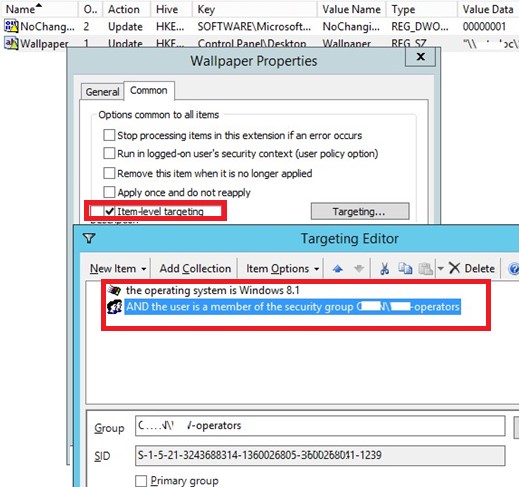
- #Gpo set default program for extension pdf#
- #Gpo set default program for extension .exe#
- #Gpo set default program for extension install#
- #Gpo set default program for extension Patch#
- #Gpo set default program for extension code#
#Gpo set default program for extension pdf#
There may well be licensing issues to take into account that mean you can’t let everyone use the full version, so you may want to enforce the PDF file type association differently for different groups of users. But some may want, for job reasons, to use something like Adobe Acrobat Pro. Some users want to use, for instance, Adobe Reader to open PDF files. Imagine you have a XenApp server hosting sessions for a multitude of users. Why deploy per-user file type associations? xml extension in Notepad instead of the default of IE), you can right-click on the file and choose Open With. If you wanted to open the file type in a different program (for instance, open a file with the. Each user normally has a default FTA that is the program that will open it when you double-click a particular file type. txt extension commonly open in Notepad, but you can use many other things, WordPad, Notepad++, even Microsoft Excel. docx extension commonly open in Microsoft Word. We’re all familiar with FTAs – they are the program that opens a particular file type extension. Also, I’m going to remove the previous article in a couple of weeks, as I feel this one is more complete.
However, once we’re down in the detail sections, there will be a lot more detail than before. Note – the background to this article has simply been lifted-and-shifted, for the most part, from the previous article referenced above. They’re a particular bugbear to those of us using XenApp 7.x or RDSH systems, because we’re used to doing them the old easy way, and now the rules have unceremoniously changed.

I’ve had quite a lot of emails and questions as a result of my previous articles, so I think it’s ripe for a bit more clarification and a bit of a (second!) revamp. DOCM file can contain macros.We’ve been down the file type associations route before. The M at the end of the file extension indicates that the document contains Macros. SLDM – New file extensions introduced in Office 2007. PPT – Microsoft Word, Excel, and PowerPoint documents. REG file could remove important information from your registry, replace it with junk data, or add malicious data. REG – A Windows registry file.REG files contain a list of registry entries that will be added or removed if you run them. If run, this file could potentially launch dangerous applications it came with or pass dangerous options to programs included with Windows. A link file could potentially contain command-line attributes that do dangerous things, such as deleting files without asking. LNK – A link to a program on your computer. Could pass potentially dangerous commands to Windows Explorer. Runs PowerShell commands in the order specified in the file. Used along with with Windows Script files. WSH – Windows Script Component and Windows Script Host control files. JS files outside the browser with no sandboxing. JS – A JavaScript file.JS files are normally used by webpages and are safe if run in Web browsers.

Similar to a VBScript file, but it’s not easy to tell what the file will actually do if you run it.
#Gpo set default program for extension code#
Will execute its included VBScript code if you run it. BAT, but this file extension was introduced in Windows NT. Contains a list of commands that will be run on your computer if you open it. Applications such as the group policy editor and disk management tool are. MSC – A Microsoft Management Console file. All of the utilities found in the Windows Control Panel are. HTA files are run as trusted applications without sandboxing. Unlike HTML applications run in browsers. Windows screen savers can contain executable code. COM – The original type of program used by MS-DOS.
#Gpo set default program for extension Patch#
Used to patch applications deployed with.
#Gpo set default program for extension install#
These install other applications on your computer, although applications can also be installed by. GADGET – A gadget file for the Windows desktop gadget technology introduced in Windows Vista. APPLICATION – An application installer deployed with Microsoft’s ClickOnce technology.
#Gpo set default program for extension .exe#
EXE files if they contain executable code. PIF files aren’t supposed to contain executable code, Windows will treat. PIF – A program information file for MS-DOS programs.

Most of the applications running on Windows are.


 0 kommentar(er)
0 kommentar(er)
